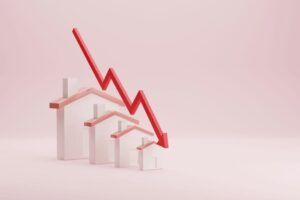In her latest insights, Kristina Hooper, Chief Global Market Strategist, Invesco, reflects on the latest central bank moves and tells us all the reasons why she sees markets as ‘swimming in a sea of uncertainty’ for the next few months.
First, mea culpa. I was wrong. I was confident that after passing on an opportunity to cut rates in July, the Federal Reserve (Fed) wouldn’t deliver a jumbo interest rate cut in September. But alas, we Americans like to supersize more than even I thought. And so — despite 50 basis point cuts being used in modern times as “crisis cuts” (2001, 2007 and 2020) — the Fed chose to cut 50 basis points last week as a “pre-emptive” cut, one intended to keep the US economy in good shape and avoid falling behind the curve and into recession.
What’s more, the Fed’s “dot plot” revealed plans for significant easing ahead: The projected year-end median policy rate was revised down to 4.4% for 2024 (from 5.1%), 3.4% for 2025 (from 4.1%), and 2.9% for 2026 (from 3.1%), where it is expected to stay in 2027.
Here are my key takeaways from Federal Reserve Chair Jay Powell’s press conference:
- Powell articulated that the Fed does not believe it is behind the curve in cutting rates, but we can interpret the 50 basis point cut as a sign that the Fed is committed to not falling behind the curve.
- Powell offered reassurances about the US economy, saying the labor market is still very healthy and unemployment is low relative to history. But he also recognized that downside risks to employment have increased. And he mentioned that unemployment was the single most important metric for the Fed in making its decision; it seems clear that the weakening of the labor market was the catalyst for this rate cut.
- When asked about the message that this decision sends to US consumers, Powell said the US economy is in a good place and the Fed is trying to keep it there.
- Powell was asked about the stubbornness of housing inflation. He was thoughtful and said that the housing market is impacted by a number of unique factors, including structural imbalances. Because of that, he said it can take longer for housing inflation to come down, but he is confident it will normalize over time.
- Powell reiterated confidence that inflation will reach the Fed’s target, that its patience has paid off.
- Powell made it clear that this decision was not a crisis rate cut but instead a normalization of monetary policy from a very restrictive level.
- Powell stayed on point throughout the press conference, reiterating a positive view of the US economy and a desire to keep it that way. The term “recalibrating policy” was reiterated multiple times. He stressed that the Fed is committed to a “good outcome.”
Powell’s term du jour is “recalibrate.” That replaces “data dependent” and before it “transitory” in the Federal Reserve Bank lexicon. It’s an acknowledgment that monetary policy needed to change to reflect a change in conditions. But which conditions? Fed Governor Chris Waller tried to reassure by saying it was progress on disinflation; he shared that the Personal Consumption Expenditures (PCE) price index was “softening much faster than I thought it was going to” which “put me over the edge to say, look, I think 50 (basis points) is the right thing to do.” However, markets don’t seem entirely convinced, especially since Powell indicated concerns about maintaining the health of the labor market in explaining the Fed decision.
Bank of England and Bank of Japan hold steady
While the Fed was busy kick-starting its easing cycle with a jumbo cut, the Bank of England decided last week to keep rates as is after starting its easing cycle last month with a normal-sized cut.
The Bank of Japan also held rates steady last week, declining to hike more after market turbulence last month. Bank of Japan Governor Kazuo Ueda explained the need to pause, “The outlook for overseas economic development is highly uncertain. Markets remain unstable. We need to scrutinize such developments carefully for the time being.”
Also last week, Norges Bank decided to defer the start of its easing cycle while the Bank of Brazil decided to hike rates, concerned that its economy is heating up.
So where do we go from here?
Most Western developed economies have begun easing or will begin it soon. The Fed’s start of easing is critical in terms of adding to the environment of monetary policy easing beginning in much of the world. This creates an accommodative climate that is typically supportive of risk assets. However, asset class performance in the next several months will likely depend on whether markets think the US and other major economies can avoid a recession and experience an economic re-acceleration.
Can the Fed avoid a US recession?
There are legitimate concerns about recession. Monetary policy was very restrictive for some time. FedEx, one of those bellwether stocks that can give us insight into the state of the economy, recently guided expectations downward. And the S&P Global PMI Survey for the US shows a manufacturing sector that has moved deeper into contraction.
However, I’m in the camp that believes that the US will avoid a recession. The Citigroup US Economic Surprise Index, while still in negative territory, has risen materially since late August. And credit spreads are suggesting that a recession is not in the offing. The ICE Bank of America US High Yield Option-Adjusted Spread hit a recent peak of 3.93% on Aug. 5. Since Sept. 10, spreads have fallen significantly, down to 3.1% on Sept. 19. This is a very low level relative to history. It tells me that the Fed is not far behind the curve and that its 50 basis point cut has increased confidence that the US should avoid a recession.And the S&P Global US Services PMI reading remains strong.
Lessons from the 1990s
As a case study in how this could potentially play out, I previously wrote about the 1995-96 playbook and I’m doing it again today because I find it so instructive – it was the last time the Fed tightened and successfully avoided a recession. As a reminder:
- Stocks rose. The S&P 500 gained 11.32% in the six months after the Fed began easing.
- Large caps outperformed. In terms of capitalization, small caps modestly underperformed large caps during that six-month period. The Russell 2000 Index rose 9.05% while the Russell 1000 Index returned 11.46%.7
- Value outperformed. In terms of styles, for the six months after the Fed began to ease rates, the value style modestly outperformed the growth style; the Russell 3000 Value Index rose 12.0% while the Russell 3000 Growth Index rose 10.48%. This was true in the large-cap space as well; during that six-month period, the Russell 1000 Growth rose 10.66% (price return) and the Russell 1000 Value rose 12.31%.
- Health care was the top sector. In terms of sector performance in the first six months of the Fed’s 1995 easing cycle, health care was the best performing sector in the S&P 500, returning 26.06% during the period. A number of S&P 500 sectors – including energy, industrials, financials, utilities and consumer staples – all posted double-digit returns for that period. However, consumer discretionary posted an anemic gain of 2.91% and the materials sector was essentially flat.
- International stocks underperformed. Both European and UK equities posted solid gains but modestly underperformed US stocks. The STOXX Europe 600 Index rose 10.05% and the FTSE 100 Index gained 9.33% during the six-month period.7 However, emerging markets equities experienced worse performance, posting a modest loss for the period – although that was due to some country-specific issues such as the Mexican peso crisis.
- Bonds posted gains. The Bloomberg US Aggregate Total Return Index rose 5.28% and the Bloomberg High Yield Total Return Index rose 6.02% in the six months after the Fed began easing.
- Real estate performed well. The FTSE NAREIT Index rose 6.89% during this six-month period.
- The US dollar strengthened. The US Dollar Index began strengthening in the summer of 1995 as the Fed began to cut. This may seem surprising, but it followed a large decline for the dollar earlier in the year as a result of the Mexican peso crisis. The strengthening that began later in the year likely reflected a normalization once the crisis began to resolve.
- Gold posted modest gains. The spot price of gold rose 2.88% in the first six months after the Fed began easing and then fell more than 3.5% in the following six-month period.
How does this compare to today?
My conclusion is that economic conditions were different back in 1995, with unemployment higher relative to today and a less resilient consumer. So while tightening was more aggressive in the most recent Fed cycle — hiking rates by 525 basis points in 2022-2023 versus 300 basis points in 1994-1995 — today’s economy has been more capable of withstanding the pressure. Also, rate cut expectations are very different today — there is an expectation of 150 basis points in cuts through the end of 2025 — and perhaps far more than that given Chicago Fed President Austan Goolsbee’s comments that he expects “many more” rate cuts over the next year — which would likely provide a far more powerful boost to risk assets in coming months than the tepid 75 basis points in cuts provided by the Fed from July 1995 through January 1996.
I expect Canada, the UK and the eurozone to also avoid recession. Not all data is positive, but I still believe real wage growth and monetary easing can help slowing economies to soon re-accelerate. And despite recent weakening in the eurozone, the ICE Bank of America Euro High Yield Index Option-Adjusted Spread is at a relatively low level, suggesting the economy will avoid recession. As far as can be seen in the data, these economies are getting the policy prescription they need based on their respective economic conditions.
Markets face a sea of uncertainty
However, despite accommodative monetary policy, markets are swimming in a sea of uncertainty over the next several months. There is the US presidential election on Nov. 5 — and the very real potential for a US government shutdown in December. We have the UK nervously awaiting the release of the Budget next month, having been warned by the new Labour government that the financial situation is more dire than had been expected. (In fact, the GfK UK Consumer Confidence indicator fell sharply to -20 in September from -13 in both August and July, and is now at its lowest level in six months, with the autumn Budget seemingly the driver of this drop.) And we have significant political uncertainty in the eurozone and even Canada; we also can’t forget a new leader must soon be chosen in Japan. We also have the Middle East hurtling towards a full-blown war after a serious escalation in hostilities last week. At the same time, we have seen an escalation in hostilities in the Russia-Ukraine War. Add to that uncertainty about when and how much central banks will cut, and we have a recipe for heightened volatility in the next several months.
So now, more than ever, is a time for diversification, in my opinion. Yes, I believe we are likely to see equities perform well, but I anticipate significant volatility given all the unpredictability in the near term. So I favor exposure to a variety of fixed income sub-asset classes such as investment grade credit, high yield and municipal bonds, which may benefit from the solid economic backdrop and the falling rate environment. And I also favor exposure to alternatives, which can offer diversification benefits through lower correlations to traditional stocks and bonds. Areas like real estate offer income and upside potential as rates fall. And gold can serve as a hedge against geopolitical risk as well as government budgets that are increasingly strained. As we brace for the next several months, the best approach may be to simply keep calm, stay diversified and look for mispricing opportunities.














